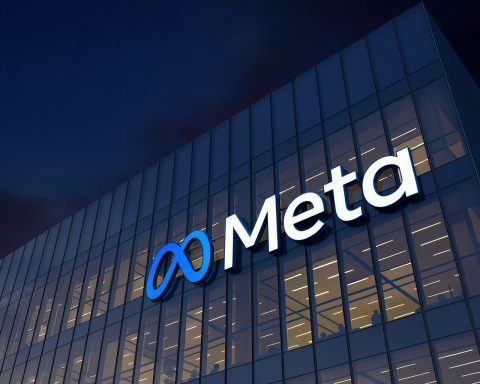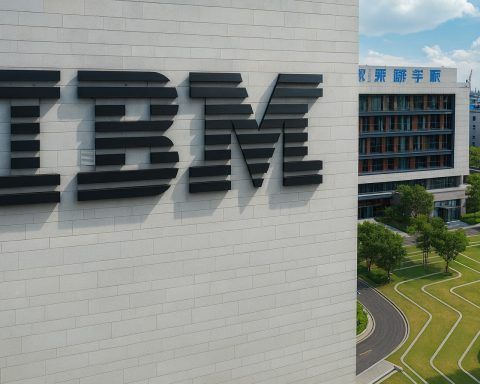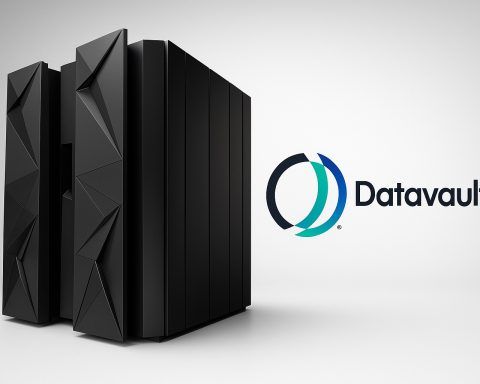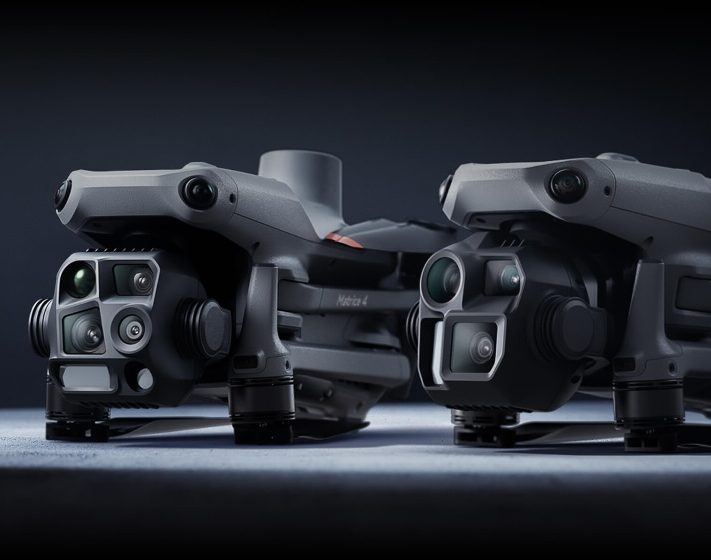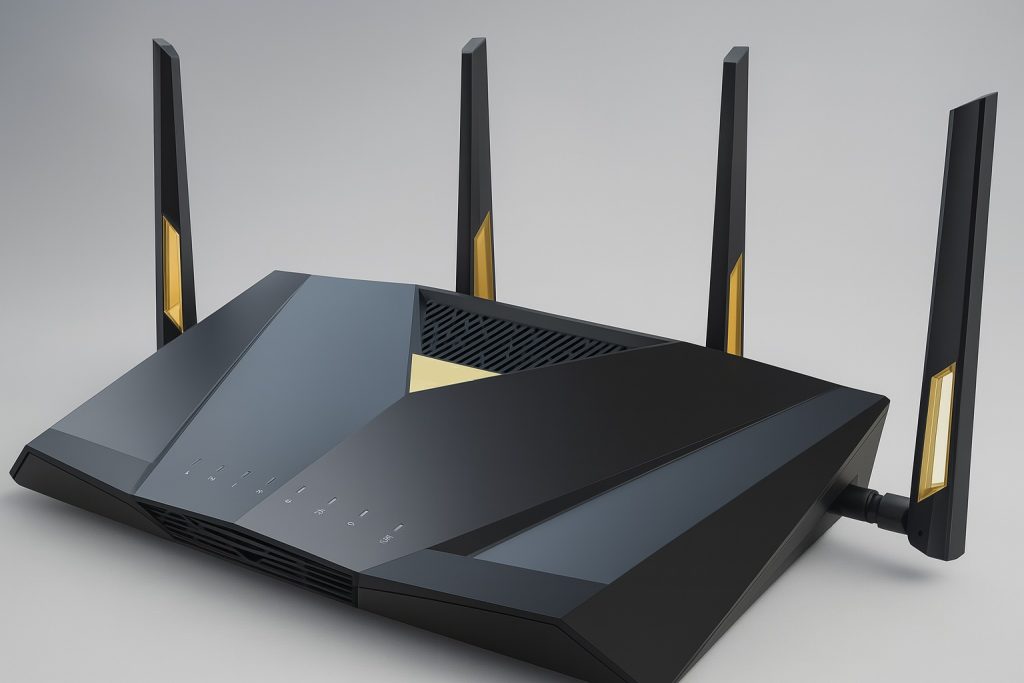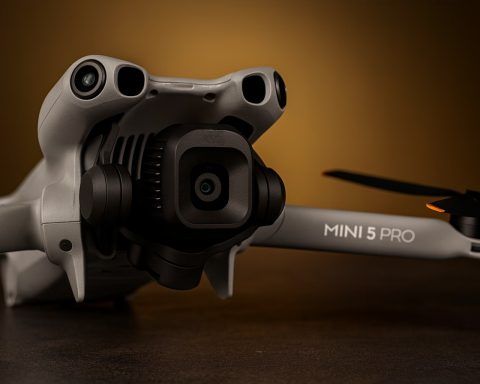Major SDN Announcements & Partnerships (Enterprise & Data Center Networks)
- Cisco’s AI-Ready Network Architecture: At Cisco Live 2025 (San Diego), Cisco unveiled a new secure network architecture designed for AI-era campus, branch, and industrial networks [1] [2]. The architecture integrates unified cloud-managed networking (combining Meraki and Catalyst management) with AI-driven operations (“AgenticOps”) and next-gen switches optimized for high bandwidth and low latency AI workloads [3] [4]. “As AI transforms work, it fuels explosive traffic growth… With a new architecture, breakthrough devices optimized for AI, and AgenticOps, we’re reimagining how networks are managed and secured,” said Jeetu Patel, Cisco’s Chief Product Officer [5]. Cisco also introduced an AI-trained network assistant (Deep Network Model) and AI Canvas for natural language IT operations, plus new Catalyst 9000 series switches built to handle AI network demands [6] [7].
- Arista Expands Campus Networking & Acquires VeloCloud: On July 1, Arista Networks announced a broad enterprise networking portfolio expansion alongside the acquisition of VMware’s VeloCloud SD-WAN business from Broadcom [8]. Arista introduced AI-driven solutions for campus and branch offices – including new Wi-Fi 7 access points and a fanless PoE switch for branch sites – aiming for zero-touch operations and proactive AIOps across client-to-cloud networks [9] [10]. The VeloCloud purchase adds a leading cloud-delivered SD-WAN platform (with integrated security and optional 5G connectivity) to Arista’s lineup, strengthening its WAN and edge offerings [11]. “The addition of the VeloCloud edge strengthens and scales the enterprise WAN network,” noted Alan Davidson, CIO of Broadcom, on Arista’s enhanced branch solution [12]. Arista also rolled out a new AWE-7220R WAN router for regional hubs to complement the VeloCloud “micro-edge” appliances [13], creating a cohesive branch-to-core SD-WAN fabric.
- Nokia’s Autonomous Network Fabric (Telco & Cloud Collaboration): Nokia launched its Autonomous Networks Fabric in mid-June – a suite of telco-trained AI models, security functions, and automation apps that serve as an “intelligence layer” across multi-vendor networks [14] [15]. This platform enables operators to treat the network as one adaptive system, with unified data management, 360° observability, and explainable AI for self-optimizing networks [16] [17]. Nokia simultaneously announced an expanded partnership with Google Cloud to offer this Autonomous Network Fabric as a SaaS application on Google’s cloud and on-premises via Google Distributed Cloud [18]. “Operators now have a fully integrated suite with unified data and explainable AI… to manage infrastructure, services, and cyber risks,” said Andy Hicks, Senior Principal Analyst at GlobalData, highlighting the need for industry-trained AI in networking [19]. Google Cloud’s VP Muninder Sambi added that the joint solution will “proactively detect and resolve network issues, and turn data into value for high-performing networks” by marrying Nokia’s telecom domain expertise with Google’s AI tools [20].
- Other Notable Partnerships: In enterprise SD-WAN and SASE, new collaborations emerged. For example, Adaptiv Networks and CyberReef announced a partnership in June to deliver SD-WAN and SASE solutions across African markets [21]. Meanwhile, telecom operators are teaming with cloud providers for edge networking: Telstra signed an MoU with Nokia to open up 5G network APIs for developers (monetizing 5G services via open API exposure) [22]. These efforts underscore the cross-sector nature of SDN in 2025, blurring lines between traditional network vendors, telcos, and cloud platforms.
SDN in Telecom & 5G Networks (Innovations and Deployments)
- 5G Standalone & Advanced Networks: Operators worldwide in mid-2025 accelerated adoption of 5G Standalone (SA) cores and even 5.5G (5G-Advanced) upgrades, which leverage SDN/NFV to enable new services. In the Middle East, Zain Kuwait launched one of the first commercial 5G-Advanced networks in June, touting higher speeds and ultra-low latency for UHD streaming and gaming [23]. China leads in 5.5G: by mid-2025, over 300 cities were upgraded and 10+ million users subscribed to new 5G-A services with guaranteed quality tiers [24]. At MWC Shanghai 2025, Huawei emphasized integrating AI into networks and noted that “unlocking 5G’s full potential” depends on investing in standalone 5G cores and advanced capabilities [25] [26]. Ericsson’s CTO Erik Ekudden echoed that sentiment, calling the industry at an inflection point where 5G SA plus mid-band coverage will “unleash a wave of innovation,” provided networks continue evolving [27].
- AI-Powered Network Management: Telecom vendors introduced SDN innovations infused with AI to handle the growing complexity of 5G and edge services. ZTE unveiled a “5G-A AgentGuard” solution in late June – an AI-driven network intelligence tool for the 5G-Advanced era [28]. AgentGuard uses native AI to dynamically guarantee network QoS, identifying traffic from AI-driven applications and autonomously allocating slice resources with high uplink bandwidth and low latency [29] [30]. In demos, ZTE showed it could boost uplink speeds and cut latency by >20% for voice assistant and other AI-heavy services via real-time, granular adjustments in the network [31]. Similarly, Nokia’s Autonomous Fabric (noted above) and Ericsson’s push for AI-powered network operations centers indicate an industry-wide move toward autonomous, self-healing networks. In fact, nearly 98% of network leaders now say AI-powered, autonomous networks will be essential for growth, though only ~41% have started deploying such capabilities, highlighting the opportunity for these new SDN tools [32] [33].
- Open RAN and Virtualization: The once-hyped movement toward open, software-defined RAN slowed somewhat in mid-2025. Many operators grew cautious due to integration challenges and performance gaps. A UK-based Open RAN test lab (Digital Catapult in London) did achieve O-RAN Alliance certification in June – a positive step for validating multi-vendor RAN solutions [34]. However, a Light Reading analysis suggested that incumbent vendors Ericsson and Nokia have “vanquished” the Open RAN threat, as their integrated 5G offerings continue to dominate deployments [35]. Still, telecom networks are increasingly virtualized and software-driven: operators are virtualizing core routers, deploying SDN-based transport, and using cloud-native 5G core functions at scale. “Telecom network infrastructure is increasingly software-defined, automated, and cloud-integrated,” observed a TS2 tech trends report, noting that telcos are even hosting 5G core and edge workloads in data centers once reserved for cloud providers [36] [37]. This convergence means traditional vendor boundaries are blurring – e.g. Nokia and Cisco (historically telecom hardware suppliers) are now providing data center switching and cloud software, while carriers partner with hyperscalers on network-as-a-service and edge computing initiatives [38] [39].
Cloud & Edge Computing Developments Involving SDN
- Telco Edge Services: Leveraging SDN and MEC (Multi-access Edge Computing), telecom operators rolled out new edge platforms in mid-2025. For example, Verizon Business launched an Edge Transportation Exchange in June – a 5G MEC-based V2X (vehicle-to-everything) platform for real-time data sharing among connected cars, smart infrastructure, and pedestrians [40]. This virtualized, software-defined edge system enables safety use cases (pedestrian alerts, traffic and weather warnings) without requiring physical roadside units [41] [42]. Shamik Basu, Verizon’s VP of Networking, explained the significance: “Cars are evolving from mechanical vehicles to software-defined mobile devices… Edge technology gives automakers, governments, and developers a robust platform for the cellular-connected future of transportation.” [43] Deployments are underway with partners like Volkswagen and state DOTs, highlighting how SDN-powered edge networks can support ultra-low latency applications in transportation.
- Edge Infrastructure Expansion: Cloud and colo providers also invested in edge data centers and networking to support SDN workloads at the network periphery. In North America, regional data center hubs saw upgrades – e.g., 1623 Farnam completed a major expansion of its Omaha edge data center to handle surging low-latency traffic in the U.S. Midwest [44]. Telecom operators in Europe and Asia likewise pursued edge buildouts: a new EU-backed “SmartSpires” project in Luxembourg is equipping a campus with 5G + edge nodes for smart city applications [45]. In Africa, Kenya’s AI-focused data center firm IXAfrica partnered with EdgeNext to develop local cloud-edge services [46]. These efforts align with forecasts that demand for edge computing will boom. Analysts project the edge data center market to reach $109.8 B globally by 2034 (up from ~$6.6 B in 2024) [47] [48], and the MEC (edge cloud) market to soar toward $120+ B by 2032 (~49% CAGR) [49] [50]. This growth is fueled by 5G rollouts, latency-sensitive apps, and enterprises pushing computing closer to users. SDN is a linchpin in these edge architectures – enabling on-demand network slicing, dynamic traffic steering, and centralized management of distributed edge nodes.
- Cloud Providers & SDN Integration: Major cloud platforms continued to integrate with SDN solutions. As noted, Nokia’s new Autonomous Network Fabric can be deployed on Google Cloud for telecom customers [51]. Likewise, cloud vendors like Microsoft and Amazon are working with telcos on hybrid cloud networking – e.g. Azure’s Arc platform now extends software-defined network control to on-premises edge environments [52]. These partnerships illustrate how cloud-based SDN control planes are managing connectivity from core data centers out to the edge. In turn, telecom operators are exploring offering their own cloud-like network services; many are now selling edge cloud or managed SD-WAN services to enterprises, operating in an “as-a-service” model. The net effect is an increasingly seamless fabric between cloud and network: carriers and cloud providers jointly enabling programmability at all layers, from data center interconnects to the far edge.
Market Trends and Analyst Forecasts
- Surging Investment for AI and Cloud Networking: Across enterprise IT and telecom, surveys show a near-consensus on the need to modernize networks for emerging technologies. A Cisco global survey released in June found 97% of IT leaders believe network upgrades are critical for successful AI, IoT, and cloud deployments, and 91% plan to boost network spending accordingly [53]. Network resilience is top of mind – 95% said it’s now “mission-critical,” given that outages (often from congestion or cyberattacks) cost the industry an estimated $160 B per year [54]. There is also strong belief in automation: 98% agree that autonomous, AI-driven networks will be essential for future growth, even though less than half have begun implementing such capabilities [55]. This gap is driving vendor innovation in AI-enhanced SDN (as seen in Cisco, Nokia, etc.) and suggests significant room for growth.
- SDN Market Growth & Segments: Industry research indicates the SDN market is expanding steadily in 2025. The global SDN market is estimated around $23–24 billion in 2025 and is projected to roughly double by 2033 (approaching $49 B) [56]. Analysts at Business Research Insights report a ~9% CAGR for SDN through the next decade, fueled by rising cloud adoption and enterprise digitalization. Over 70% of enterprises worldwide have either adopted SDN or plan to, aiming to improve agility and reduce network complexity [57]. However, about 45% cite challenges integrating SDN with legacy infrastructure as a key barrier [58]. Another notable trend is the infusion of AI – by 2025, more than 60% of SDN deployments are expected to incorporate AI-driven automation for handling dynamic traffic patterns [59]. In terms of where SDN is used, data center networking still accounts for the majority (~55%) of SDN implementations, but SD-WAN and edge networking are fast-growing segments (SD-WAN made up ~30% of new SDN installations recently) [60]. This aligns with the surge in cloud-based WAN solutions and SASE (Secure Access Service Edge) offerings. Indeed, industry analyst firm ISG in June launched a global study focusing on managed SD-WAN, SDN at the edge, and SASE services, underscoring enterprise demand in these areas [61] [62].
- Expert Insights – Consolidation and Strategy: Leaders in the networking field are also remarking on strategic shifts. With the rise of cloud and AI, some predict further consolidation among networking vendors to achieve scale. “Scale is critical for infrastructure vendors… I expect we’ll see more consolidation as vendors respond to hyperscaler and AI-driven pressures,” said Dene Lewis, CTO of CAE Technology Services, commenting on recent mergers [63]. The combination of cloud giants entering networking and the massive investments required for AI-era networking is pressuring traditional players to merge or partner. On the service provider side, experts highlight the growth of private 5G and enterprise networking solutions as a key trend: Omdia’s research identified Nokia, ZTE, and Ericsson as leaders in private wireless deployments by mid-2025, reflecting how telcos and vendors are targeting enterprise LAN/edge opportunities [64] [65]. “Networks that can adapt on-demand and deliver guaranteed performance for new applications will define the next era,” observed Nokia Cloud SVP Kal De, emphasizing that there is “no good AI without good data” in the network – meaning investments in network intelligence and data-driven control will continue to grow [66] [67].
Mergers, Acquisitions & Regulatory News
- HPE’s $14B Acquisition of Juniper Networks: One of the biggest SDN-related deals of 2025 reached approval in late June. Hewlett Packard Enterprise (HPE) received the green light to complete its $14 billion purchase of Juniper Networks, after overcoming a U.S. Department of Justice antitrust challenge [68]. The DoJ had sued to block the merger on concerns it might “raise prices, reduce innovation and diminish choice” in networking, but ultimately settled, allowing the deal to proceed with certain conditions [69]. The merger combines HPE’s Aruba networking division with Juniper’s extensive SDN portfolio (including Mist AI, Contrail SDN, and data center switching). Industry reaction was optimistic: “The acquisition… further accelerates HPE’s ability to grow in the data center and cloud segments as a leading player in AI infrastructure,” said Miriam Murphy, European President at TD Synnex, adding that partners will now have a “comprehensive portfolio of secure, AI-native networking solutions” to offer [70]. Dene Lewis (CTO, CAE) noted HPE will need to streamline overlaps between Aruba and Juniper, but if executed well “the market benefits from a credible alternative” to larger rivals [71]. Regulatory approvals fell into place globally (the EU and UK had cleared it earlier [72]), and integration planning is underway – though IDC’s Stuart Wilson cautioned that merging two distinct partner ecosystems is “a complex undertaking” that will be crucial to HPE’s future success [73] [74].
- Arista Buys VMware’s VeloCloud Unit: As mentioned, Arista Networks made a strategic acquisition in July by purchasing the VeloCloud SD-WAN portfolio from Broadcom/VMware [75]. (Broadcom acquired VMware in 2024 and divested VeloCloud to Arista.) This move gives Arista instant credibility in software-defined WAN and secure edge networking, complementing its enterprise campus switches. The deal size wasn’t officially disclosed, but it reflects the ongoing M&A trend in networking where cloud-era challengers scoop up SDN technology to broaden their offerings. In Arista’s case, the company now can provide branch-to-cloud connectivity solutions that rival Cisco and HPE-Aruba’s SD-WAN products. Notably, the acquisition also highlights Broadcom’s post-merger strategy to shed non-core assets (VMware’s SDN assets) and focus on its semiconductor and core software lines. According to Alan Davidson, Broadcom CIO, Arista’s integration of VeloCloud will “strengthen and scale” enterprise WAN capabilities, suggesting Broadcom itself was a customer of both Arista and VeloCloud and sees value in their combination [76].
- Regulatory Moves – Banning Chinese Gear: On the regulatory front, network security and supply-chain concerns remained in focus. In Europe, several governments in June 2025 advanced plans to phase out Huawei and ZTE equipment from 5G networks [77]. While not an SDN technology issue per se, these policies are reshaping the telecom landscape by favoring open or Western-aligned solutions. Many carriers are accelerating swaps of radio and core network gear, often replacing it with Nokia, Ericsson, or Open RAN alternatives (though as noted, Open RAN adoption is cautious). Additionally, spectrum regulators and standards bodies continued crafting policies for 5G network slicing and net neutrality as networks become more software-defined. For example, discussions in the U.S. and EU touched on how to ensure fair access when operators can dynamically allocate bandwidth (a capability enabled by SDN). No major new regulation was enacted in June–July, but the trend is toward greater oversight of how SDN-driven networks handle traffic management and interoperability. The successful resolution of the HPE–Juniper antitrust case also sets a precedent: regulators signaled they will scrutinize big networking mergers for competition issues, yet they ultimately allowed this consolidation, hinting at recognition that scale is needed to innovate in the AI-network era [78] [79].
Conclusion
In summary, June and early July 2025 have been highly eventful for Software-Defined Networking across all domains. We’ve seen major vendors launching AI-powered network architectures and autonomous fabrics to meet the exploding demands of AI applications. Telecom operators are rolling out software-defined 5G enhancements and edge services, bringing SDN to smart cities, vehicles, and industry solutions at the network’s edge. Analysts remain bullish on SDN growth – forecasting strong double-digit expansion in segments like SD-WAN, SASE, and edge computing – even as enterprises work through challenges of integrating new SDN tech with legacy systems. The period also underscored significant market shifts: consolidation (HPE+Juniper, Arista+VeloCloud) is creating new powerhouse players positioned to take on Cisco and others with broad end-to-end portfolios. Experts from company executives to industry analysts agree that networks must become more automated, secure, and intelligent, and these recent developments reflect that mandate. With virtually all network leaders planning upgrades, and AI, 5G, and cloud computing accelerating, SDN will continue to be the critical enabler for networking innovation in the coming years [80] [81].
Sources:
- SDxCentral News – ISG to Evaluate Global SDN Services and Solutions [82] [83]
- Channel Futures – HPE’s Juniper Acquisition: Partner Integration a ‘Complex Undertaking’ [84] [85]
- Cisco Press Release – Cisco Unveils Secure Network Architecture to Accelerate Workplace AI [86] [87]
- Cisco Press Release (cont.) – Jeetu Patel quote on AI and networking [88]
- Cisco Press Release (features) – Unified management and AgenticOps details [89] [90]
- Arista Press Release – Arista Expands AI-Driven Campus and Branch Networking, Acquires VeloCloud [91] [92]
- Arista Press Release (products) – New branch switch and Wi-Fi 7 APs [93] [94]
- Nokia Press Release – Nokia Launches Autonomous Network Fabric (AI-powered automation suite) [95] [96]
- Nokia Press Release (Google Cloud partnership) [97] [98]
- Nokia Press Release – Analyst quote (Andy Hicks, GlobalData) [99]
- Verizon/Edge IR – Verizon 5G Edge V2X platform and Shamik Basu quote [100] [101]
- TS2 Tech Trends (Telecom Infrastructure) – AI, software-defined focus in telecom networks [102] [103]
- TS2 Tech (Telecom) – Cisco survey stats on AI-era networking needs [104] [105]
- TS2 Tech (Telecom) – 5G Advanced rollout (Zain Kuwait) [106]; China 5G-A users [107]
- TS2 Tech (Telecom) – ZTE 5G-A AgentGuard innovation [108] [109]
- Light Reading via TS2 – Open RAN outlook (analysis of Nokia/Ericsson vs Open RAN) [110] [111]
- TS2 Tech (Edge Computing) – Edge market forecasts (MEC and data centers) [112] [113]
- BusinessResearchInsights – Global SDN market size & trends (2024–2033) [114] [115]
- BusinessResearchInsights – SDN adoption drivers and AI trend [116] [117]
- BusinessResearchInsights – SDN segment breakdown (data center vs WAN) [118]
References
1. investor.cisco.com, 2. investor.cisco.com, 3. investor.cisco.com, 4. investor.cisco.com, 5. investor.cisco.com, 6. investor.cisco.com, 7. investor.cisco.com, 8. www.arista.com, 9. www.arista.com, 10. www.arista.com, 11. www.arista.com, 12. www.arista.com, 13. www.arista.com, 14. www.nokia.com, 15. www.nokia.com, 16. www.nokia.com, 17. www.nokia.com, 18. www.nokia.com, 19. www.nokia.com, 20. www.nokia.com, 21. www.adaptiv-networks.com, 22. ts2.tech, 23. ts2.tech, 24. ts2.tech, 25. ts2.tech, 26. ts2.tech, 27. ts2.tech, 28. ts2.tech, 29. ts2.tech, 30. ts2.tech, 31. ts2.tech, 32. ts2.tech, 33. ts2.tech, 34. ts2.tech, 35. ts2.tech, 36. ts2.tech, 37. ts2.tech, 38. ts2.tech, 39. ts2.tech, 40. ts2.tech, 41. ts2.tech, 42. ts2.tech, 43. ts2.tech, 44. ts2.tech, 45. ts2.tech, 46. ts2.tech, 47. ts2.tech, 48. ts2.tech, 49. ts2.tech, 50. ts2.tech, 51. www.nokia.com, 52. learn.microsoft.com, 53. ts2.tech, 54. ts2.tech, 55. ts2.tech, 56. www.businessresearchinsights.com, 57. www.businessresearchinsights.com, 58. www.businessresearchinsights.com, 59. www.businessresearchinsights.com, 60. www.businessresearchinsights.com, 61. www.sdxcentral.com, 62. www.sdxcentral.com, 63. www.channelfutures.com, 64. ts2.tech, 65. ts2.tech, 66. www.nokia.com, 67. www.nokia.com, 68. www.channelfutures.com, 69. www.channelfutures.com, 70. www.channelfutures.com, 71. www.channelfutures.com, 72. www.channelfutures.com, 73. www.channelfutures.com, 74. www.channelfutures.com, 75. www.arista.com, 76. www.arista.com, 77. ts2.tech, 78. www.channelfutures.com, 79. www.channelfutures.com, 80. ts2.tech, 81. www.businessresearchinsights.com, 82. www.sdxcentral.com, 83. www.sdxcentral.com, 84. www.channelfutures.com, 85. www.channelfutures.com, 86. investor.cisco.com, 87. investor.cisco.com, 88. investor.cisco.com, 89. investor.cisco.com, 90. investor.cisco.com, 91. www.arista.com, 92. www.arista.com, 93. www.arista.com, 94. www.arista.com, 95. www.nokia.com, 96. www.nokia.com, 97. www.nokia.com, 98. www.nokia.com, 99. www.nokia.com, 100. ts2.tech, 101. ts2.tech, 102. ts2.tech, 103. ts2.tech, 104. ts2.tech, 105. ts2.tech, 106. ts2.tech, 107. ts2.tech, 108. ts2.tech, 109. ts2.tech, 110. ts2.tech, 111. ts2.tech, 112. ts2.tech, 113. ts2.tech, 114. www.businessresearchinsights.com, 115. www.businessresearchinsights.com, 116. www.businessresearchinsights.com, 117. www.businessresearchinsights.com, 118. www.businessresearchinsights.com


